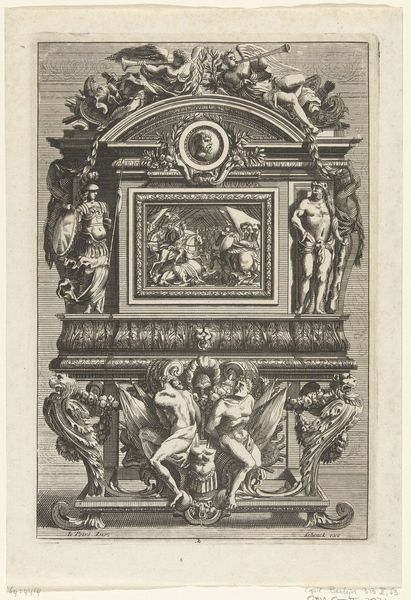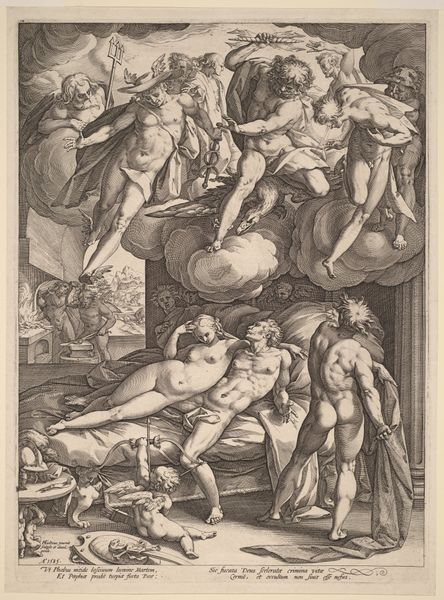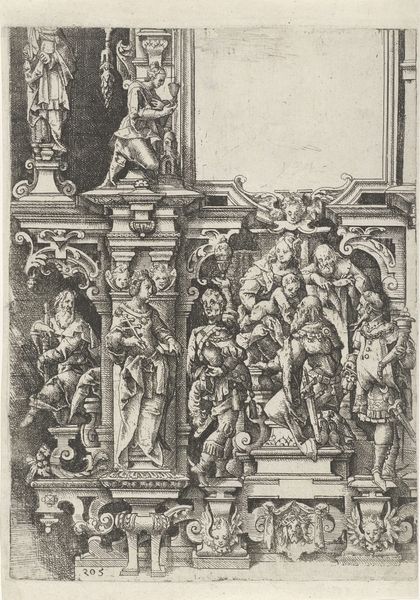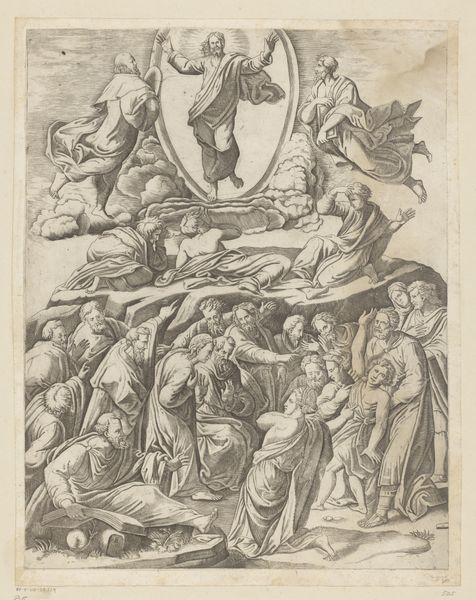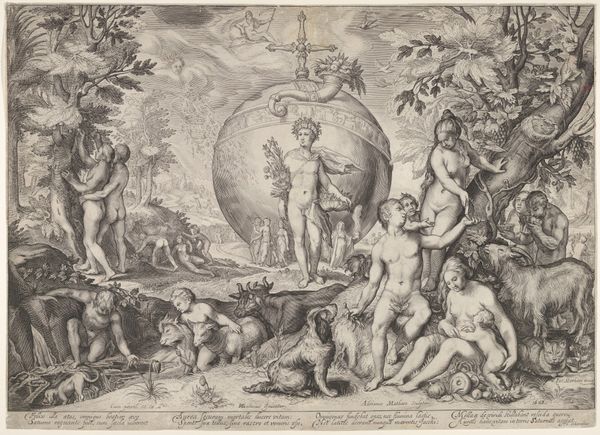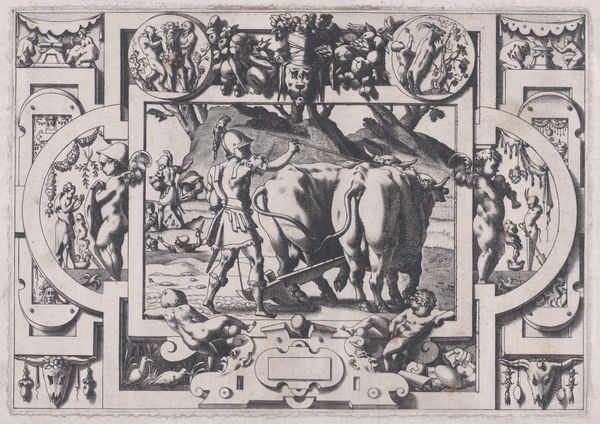
Design for a Painted Glass with Scene from the New Testament 1598
0:00
0:00
drawing, print, ink, pen
#
drawing
#
narrative-art
# print
#
pen sketch
#
figuration
#
11_renaissance
#
ink
#
soldier
#
horse
#
men
#
pen
#
history-painting
#
northern-renaissance
Dimensions: sheet: 12 9/16 x 8 3/16 in. (31.9 x 20.8 cm)
Copyright: Public Domain
Curator: This detailed pen and ink drawing, currently residing here at the Metropolitan Museum of Art, is a design for painted glass by Christoph Murer, dating back to 1598. It depicts scenes from the New Testament. Editor: Immediately, I'm struck by the intricacy of the line work. The composition, with those circular vignettes, reminds me of illuminated manuscripts, almost like a window into another time. The greyscale also lends an eerie, subdued mood, even for religious scenes. Curator: The choice of medium definitely informs the aesthetic. Murer was working within the tradition of Northern Renaissance printmaking. He was thinking about how these images would translate into stained glass, a medium often used to educate and inspire faith. The piece operates within established visual conventions. Editor: I wonder about the social context, though. What did it mean to represent these religious scenes in such a format? Did it make biblical narratives more accessible, or did it reinforce existing power structures by presenting specific interpretations? And, more pointedly, for what demographic are we making these interpretations? Curator: Certainly, it was about conveying the message of the Church. Visual art during the Reformation served as powerful propaganda, particularly in regions where literacy was limited. However, consider the market, the people who purchased or commissioned such stained glass were members of the affluent class. Editor: I can see how this reflects gender dynamics, too. Mary, often depicted passively, might serve as a symbolic figure, a model of feminine virtues during a very restrictive patriarchal era. Her role within these narratives, particularly in the context of early modernity, reflects evolving ideas about womanhood. And who held ownership over their role in these narratives, especially considering a limited perspective? Curator: It also touches on political complexities of the era. Notice the detailed rendering of the Roman soldiers. The artistry suggests the wealth and power the Church wanted to convey. It's not just religious instruction, it's an assertion of authority. Editor: Absolutely. Art served as a mirror to social ambitions. Examining it through these lenses exposes some of its more contradictory elements. Well, this piece offered rich veins to mine. Curator: Indeed, it prompts one to think critically about the role of art in both reflecting and shaping societal views.
Comments
No comments
Be the first to comment and join the conversation on the ultimate creative platform.

